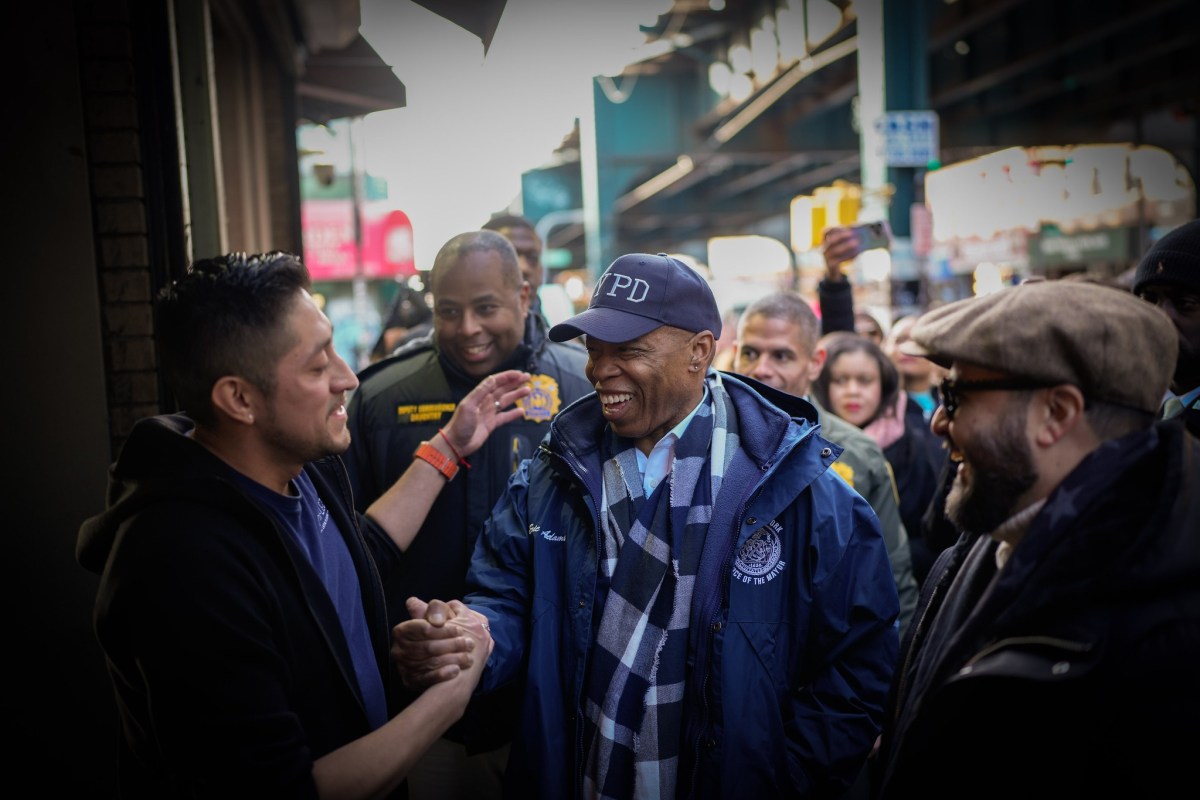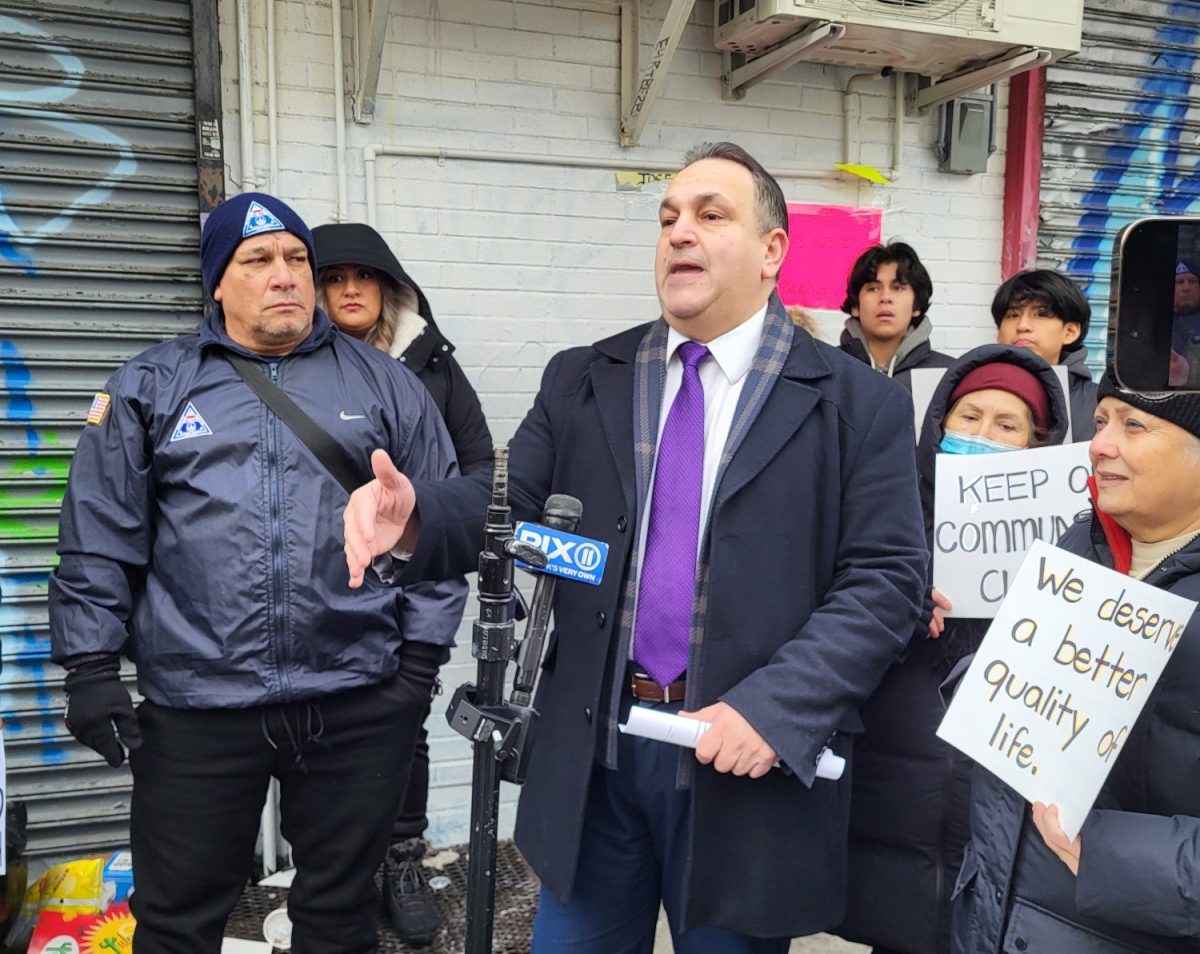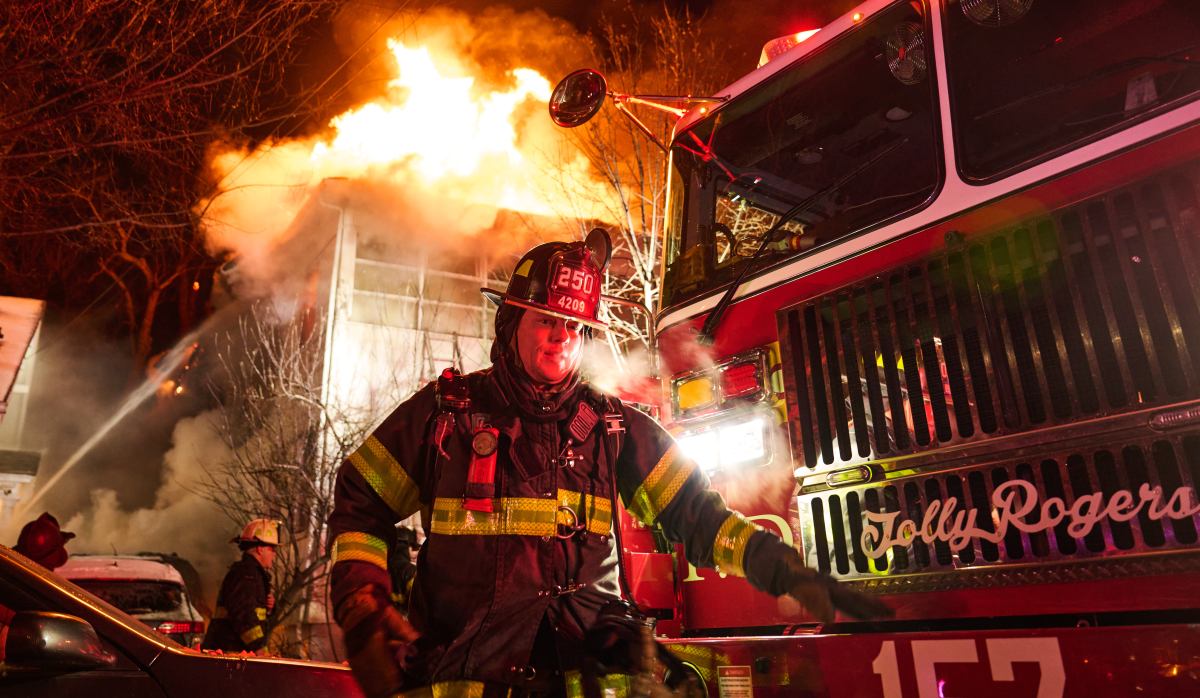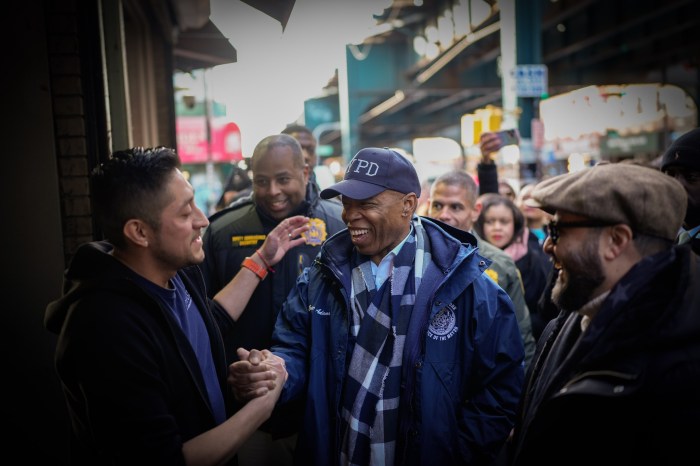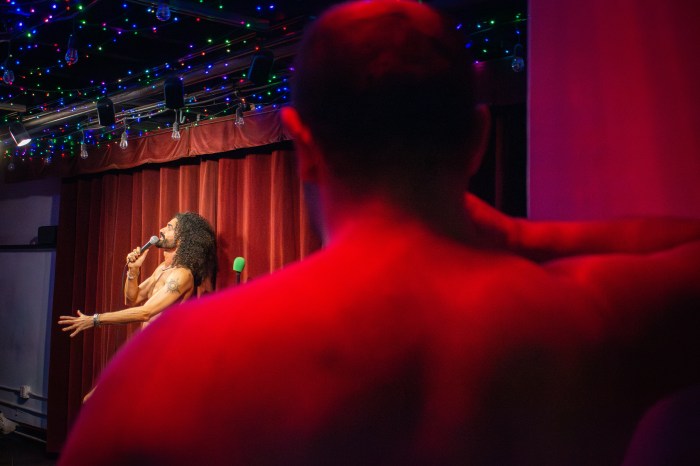By Patricia Fieldsteel
Francis Mason, cultural ambassador, dance critic, radio personality and longtime resident of Morton St., died peacefully in his sleep at age 88 on Sept. 24.
Mason was known for his courtly sophistication and wit, coupled with a profound knowledge and understanding of the arts, particularly dance. He was from another time, another era, and yet still very much now, wanting to learn about anything new and, if it passed muster, to embrace it. It was almost as if he had leapt with a graceful grande jetée and roaring laugh from the pages of Henry James, his favorite author, embracing life to its fullest and living every minute as if it might be his last. He was rarely without a hat, in summer a straw bowler, in winter a fedora, worn with his vicuna coat or mink-lined raincoat.
He was a gourmet cook, a skill he claimed he learned so his late wife, Pat, could garden all day at their country home in Rye. He frequently lunched and attended or gave lectures at his beloved club, The Century Association, and had been its president, spearheading the admittance of women and minorities as members, a move that prevailed against much resistance.
It was my job, as his personal assistant, to try to bring a semblance of order to a one-man whirlwind.
His friends were a who’s who of the cultural and diplomatic world. Francis read several books at a time, almost always the classics. He rarely watched television, though he loved “Six Feet Under” and “Masterpiece Theatre.” He played squash into his 80s, worked out at the gym several times a week, took Gymboree classes with his toddler granddaughter, Lucy, and avidly practiced tai chi.
Francis Scarlett Mason, Jr. was born into an old society family in Jacksonville, Fla., and attended public schools there and in Philadelphia, where the family later moved. At age 12, he was given a typewriter for Christmas and began to write. His love and appreciation of music was nurtured from early childhood by regular attendance at the Philadelphia Orchestra when the famed conductor Leopold Stokowski was its director.
Mason was graduated from St. John’s College at Annapolis where he studied and later taught the “Great Books of Western Civilization.” He took rigorous, 4-year courses in classical Greek and French. He studied music under the Russian/American composer Nicolas Nabokov (cousin of Vladimir) and the American composer Elliott Carter.
During the war, Francis served overseas with the invasion forces in Normandy. Instead of carousing with the guys during free time, he decided to translate Zola’s “The Experimental Novel” from French to English in 1944, a work he was still hoping to have published at his death.
Mason returned to the States and joined the research and library section of “The Voice of America,” the State Department’s Overseas Broadcasting Service. In New York, he became reacquainted with his former St. John’s professor, the philosopher William Gorman, and his wife, Natalie Bodanya, a former soprano at The Metropolitan Opera. The Gormans insisted Francis accompany them to the April 28, 1948, première at City Center of Balanchine’s “Orpheus,” with music by Stravinsky. He refused, declaring dance to be “stupid, sissy stuff.”
Appalled, they ignored his protests. The performance profoundly electrified him, transforming his life in a way he could never have imagined. Maria Tallchief danced Eurydice; Nicholas Magallanes, Orpheus; Tanaquil LeClercq, the leader of the Baccanantes, and Francisco Mancion, the Dark Angel. Tallchief became the ultimate ballerina of his life and he stayed in touch with her until his death, as he did with “Tanny” LeClercq (a former Balanchine wife) until her death in 2000. He would often run up to the Apthorp to visit her, where she was confined to a wheelchair after a devastating attack of polio ended her career.
Less than a year after “Orpheus,” with Bodanya’s help in securing the position, he began to broadcast a weekly 45-minute show on WNYC called “Meet the New York City Ballet.” Balanchine and Lincoln Kirstein, with Leon Barzin as musical director and Balanchine and Jerome Robbins as choreographers, had founded the company in 1948. Tallchief was married to Balanchine at the time and Francis asked Nicolas Nabokov, who knew them, to arrange a dinner. Mason and Balanchine quickly became close friends, with Balanchine inviting him to observe company rehearsals.
A friend of Mason’s, the poet Frederick Morgan, had co-founded a literary quarterly, The Hudson Review, in 1948. Morgan asked Francis to write for it, first about literature and film, and then dance. Around the same time, Mason began contributing to the London monthly journal, Ballet.
Lawrence Sherman, a former student who was working at Doubleday, asked Francis to ghostwrite a book telling the stories of the great ballets, which would be attributed to Balanchine. It was then that Mason found his landmark style of recording interviews, which he would then edit and write up. The first edition, published in 1954, was “Balanchine’s Complete Stories of the Great Ballets,” edited by Mason. The third, expanded edition, still in print, lists Mason as co-author.
In 1952, he married Patricia Michaels. Three years later, they went abroad, with Francis serving as cultural affairs officer with the United States Information Agency for four years in Belgrade, capital of then communist Yugoslavia. In addition to introducing American dance companies to the communist world, he also brought over paintings, prints, photographs, sculpture and drawings on loan from the Museum of Modern Art. More than 200,000 Yugoslavians, almost half the population at the time, saw the museum’s monumental “Family of Man” photography exhibition.
Mason was next posted as cultural ambassador to the Court of St. James in London for six years. He introduced the Merce Cunningham, Alvin Ailey and Paul Taylor dance companies and brought over the New York City Ballet and Martha Graham companies for triumphal return visits. In August 1963, he put together the American contribution to the annual Edinburgh International Festival, featuring The Martha Graham Dance Company and Isaac Stern, Eugene Istomin and Leonard Rose — all against protests from the festival directors — amazing performances, which I was fortunate to attend and be dazzled by as a teenager, many decades before I met Francis Mason.
In 1965, the Masons settled in Washington, D.C., with their two young children, Spencer and Leslie, who had been born abroad. Mason was appointed chief of East/West Exhibitions, in which American art was sent to the former U.S.S.R. and communist-bloc countries in Eastern Europe.
His old friends the painter Robert Rauschenberg and engineering wonder Billy Klüver asked him to return to New York to be president of their organization, Experiments in Art and Technology (E.A.T.). Mason, Pat, Spencer and Leslie camped out in the chaotic circus of Rauschenberg’s Lafayette St. loft until they found a place to live in the West Village.
A year later, Arthur A. Houghton, Jr., chairperson of the Metropolitan Museum of Art, hired Mason to be his assistant.
In 1975, Francis became assistant director (and later acting director) of the Pierpont Morgan Library, a job he cherished. While he was at the Morgan, the former First Lady Jacqueline Kennedy, whom he’d known from her White House days, sought his advice about going into publishing. He fully supported the idea, never dreaming she would eventually commission and edit his landmark work, “I Remember Balanchine,” when she was at Doubleday. “I Remember Martha Graham,” an equally brilliant book he finished for her, was cancelled by the publisher after her death.
Today most people know Francis Mason for his original voice as a critic and interpreter of dance. His close friendships with Balanchine and Graham, “George” and “Martha,” were the stuff of legends. He viewed them as geniuses, a term he seldom used. For anyone wanting to learn what dance is truly about, his “I Remember Balanchine” is the perfect book and a fascinating, accessible read. Some of Francis’s happiest moments were spent alone with Martha at his house on Morton St., talking long into the night, while they drank and reminisced. Mason served on the board of the Martha Graham Center of Contemporary Dance at her invitation, and was its chairperson from 1974 to ’76.
In 2000, nine years after her death, he took over the chairmanship again, leading the company through the roughest years in its history, coming back from bankruptcy and emerging triumphant from an extended and ugly court battle over ownership of Graham’s choreography. Those years took their toll and he sank a personal fortune into the company, but he never complained or was bitter; he just forged ahead, doing what he saw as “the work” that had to be done to save the dances and keep her choreography and company alive in a manner that was true to her vision.
Anyone within listening range of WQXR knew him for his weekly broadcast, “The World of Dance With Francis Mason.” His voice and delivery style were unmistakable — melodious, magisterial and sparkling with humor. At first he had 45 minutes to cover the week in dance; ultimately he was cut to from one minute to 30 seconds. He became the all-time virtuoso of the 30-second review, somehow losing nothing in the time cuts. The broadcasts were seamless and came off as being relaxed and natural, but he spent hours refining them. He continued the program until summer 2009, when it was discontinued.
Mason took over the editorship of the scholarly quarterly Ballet Review in 1980, which will continue to publish after his death.
Despite his public profile, he was a private, family-oriented man. He and his wife, Pat, gardened together, traveled and took cooking classes with the French cookbook writer and teacher Lydie Marshall. With the prominent architect Hugh Hardy and his wife, they bought the land where the Federal townhouse had stood at 18 W. 11th St., before it was demolished in a bomb explosion on March 6, 1970, that killed three people, all Weathermen, who had turned the house’s subbasement into a bomb factory to further radical causes. Pat died of cancer in 1997, Francis nursing her through the final months of her life.
The Hardys and Masons had initially planned to rebuild the home as a two-family dwelling for themselves, but wrangling over Hardy’s more modern design postponed the work for eight years until it was approved. They then sold the land, with Hardy being retained as architect by the new owners. The poet James Merrill had been born and spent his first five years in the house, which was owned by his father, a founding partner in Merrill Lynch. When the rebuilt structure was completed and the new owners in residence, Francis invited the poet and his mother to see it. Merrill had memorialized the house after the bombing in his poem “18 West 11th Street.”
When he was close to 80, Mason decided he wasn’t doing enough and accepted an associate professorship of dance at the State University of New York in Purchase, where he taught “The History of Choreography.”
He was an avid gardener. The magnificent gardens at the Morton St. house and home in Rye were featured on many tours, as well as in books and magazines. When the garden surrounding the Parisian home of Honoré de Balzac, another favorite author, was destroyed by a 1999 storm, Francis immediately wrote out a generous check, in memory of his dear friend Philip Lyman of the Gotham Book Mart and James Joyce Society, to help restore and replant.
Among the numerous boards on which Mason served were the Aston Magna Foundation, Wadsworth Atheneum and New York School of Drawing. He was also a member of the Committee for the Dance Collection of the New York Public Library.
When we last spoke, on his 88th birthday, two weeks before his death, we had a long, leisurely talk. Francis was in top form, laughing, joking and reminiscing. He kept repeating how much he wished he could live to be 100, how grand that would be. I asked, “Francis, wouldn’t that depend on what shape you were in?” “No,” he answered. “Just to live, to keep on living!” I knew something was wrong. He spoke of writing a book for children, “Ballet Every Day,” which he’d already begun. “One must always stay busy, my dear,” he said. “The work, the work must go on!”
A celebration of Francis Mason’s life will be held Fri., Oct. 30, at 2 p.m., at The Joyce Theater, 175 Eighth Ave. at 19th St. Contributions can be made in his honor to Ballet Review, 27 Charlton St., NY, NY 10014.















